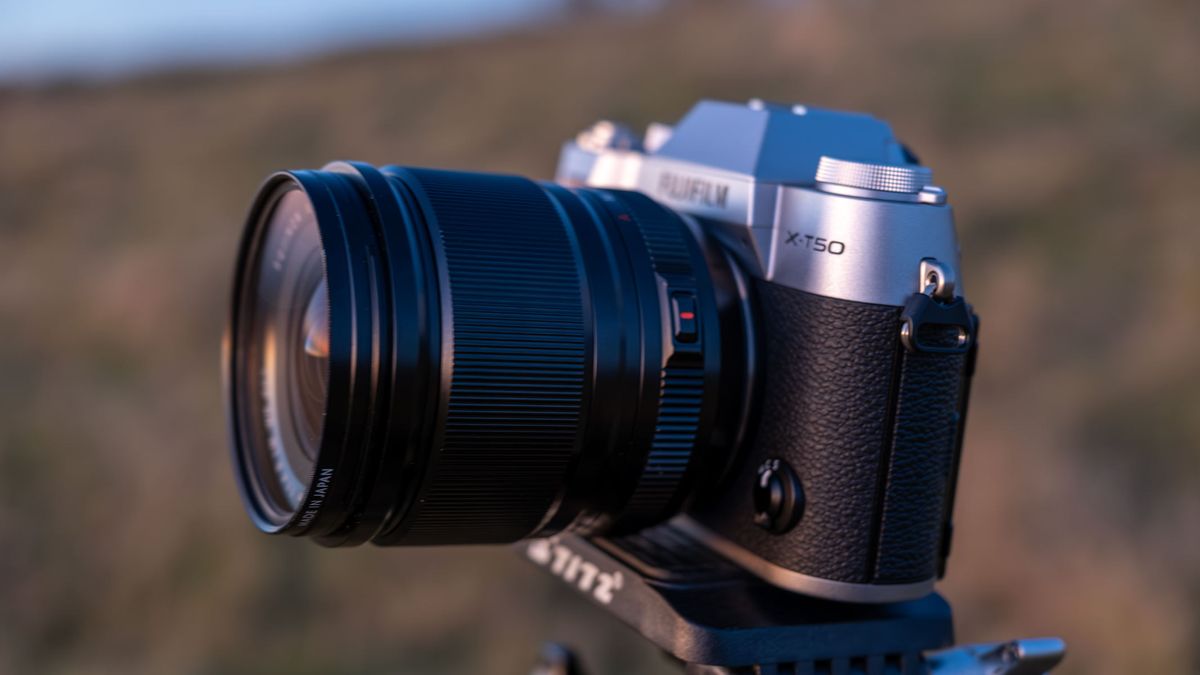Specifications
Type: Mirrorless
Sensor: 40.2-MP APS-C CMOS sensor
Lens mount: X-lens mount
ISO range: 125 – 12,800 (extendable from 64 – 51,200)
Viewfinder resolution: 2.36m dot OLED with a 0.62x magnification ratio
Screen size/resolution: 3.0 inch / 1.84 million dots
Autofocus detection range: -7 EV (phase), -4EV (contrast)
Video capability: Videos up to 6.2K internally at 30p, 4K/60p and high-speed 1080/240p
Battery life: 305 shots on full charge, 390 on economy mode
Weight: 15.45 ounces (438 g), including battery and memory card
Size: 4.9 x 3.3 x 1.9 inches (124 x 84 x 49 mm)
Memory card type: 1x SD/SDHC/SDXC (UHS-II, V90)
Screen type: Tilting LCD
The Fujifilm X-T50, released in 2024, is a more compact version of the Fujifilm X-T5, albeit with a few slight differences. Both feature the same CMOS 40.2-megapixel sensor and the same processing engine, but the X-T50 is lighter and cheaper than its predecessor. Although the X-T50 lacks weatherproofing, it packs a punch for creative photographers and offers great low-light performance for astrophotography.
The X-T50 is available for $1,399 / £1049 and boasts a high-resolution sensor, good high-ISO performance, and video capabilities of 6.2K at 30p and 4K at 60p. The camera performed well for astrophotography as we captured planets, constellations and a nebula during our testing.
Fujifilm’s X-T50 excels in capturing all photographic subjects, and we think it is one of the best cameras available. As with most retail cameras, pairing it with any of the best star trackers will drastically improve the astrophotography performance. Disguised in a rounded body that resembles a classic film camera, the X-T50 is packed with features that make it a powerful tool for capturing any subject.
Fujifilm X-T50 review
Fujifilm X-T50: Performance

★★★★
- Strong astro ability
- Slow low-light autofocus
- Long processing time for long exposures
We photographed a wide range of celestial objects with the Fujifilm X-T50. On multiple occasions, we managed to capture Orion, Taurus, the Orion Nebula (M42), the Andromeda galaxy (M31), Jupiter, Mars, the Beehive Cluster (M44), the Pleiades (M45) and the crescent moon.
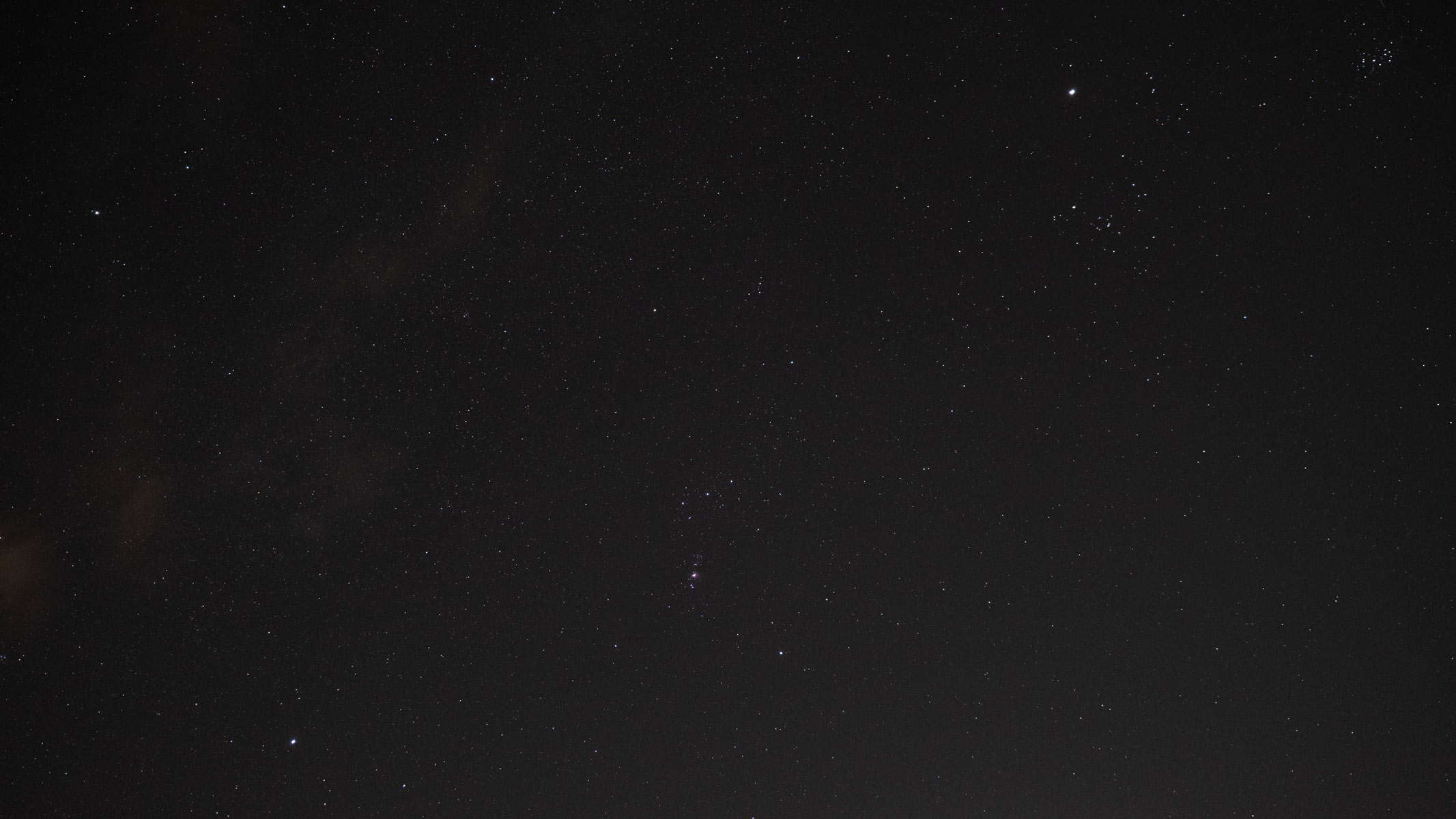
The focus mode can be adjusted with the selector on the front of the camera; we used either single autofocus or manual focus. When using the autofocus, we selected the wide/tracking size so we could detect the stars. The autofocus speed was quite slow, but it did manage to focus on the brighter objects, like Pollux, Castor, Mars, Jupiter, Rigel and Betelgeuse. When we used the manual focus to fine-tune details, a feature called “focus check” was extremely useful because it zoomed in on the targeted area when we adjusted the focus ring.
Noise started to become noticeable on ISO levels of 6,400, even with a long-exposure noise reduction (LENR) value of 4. However, the LENR did work well on lower ISOs to significantly reduce noise when we zoomed in. Noise on higher ISOs wasn’t really an issue, as we were able to capture skies full of stars at ISOs as low as 625.
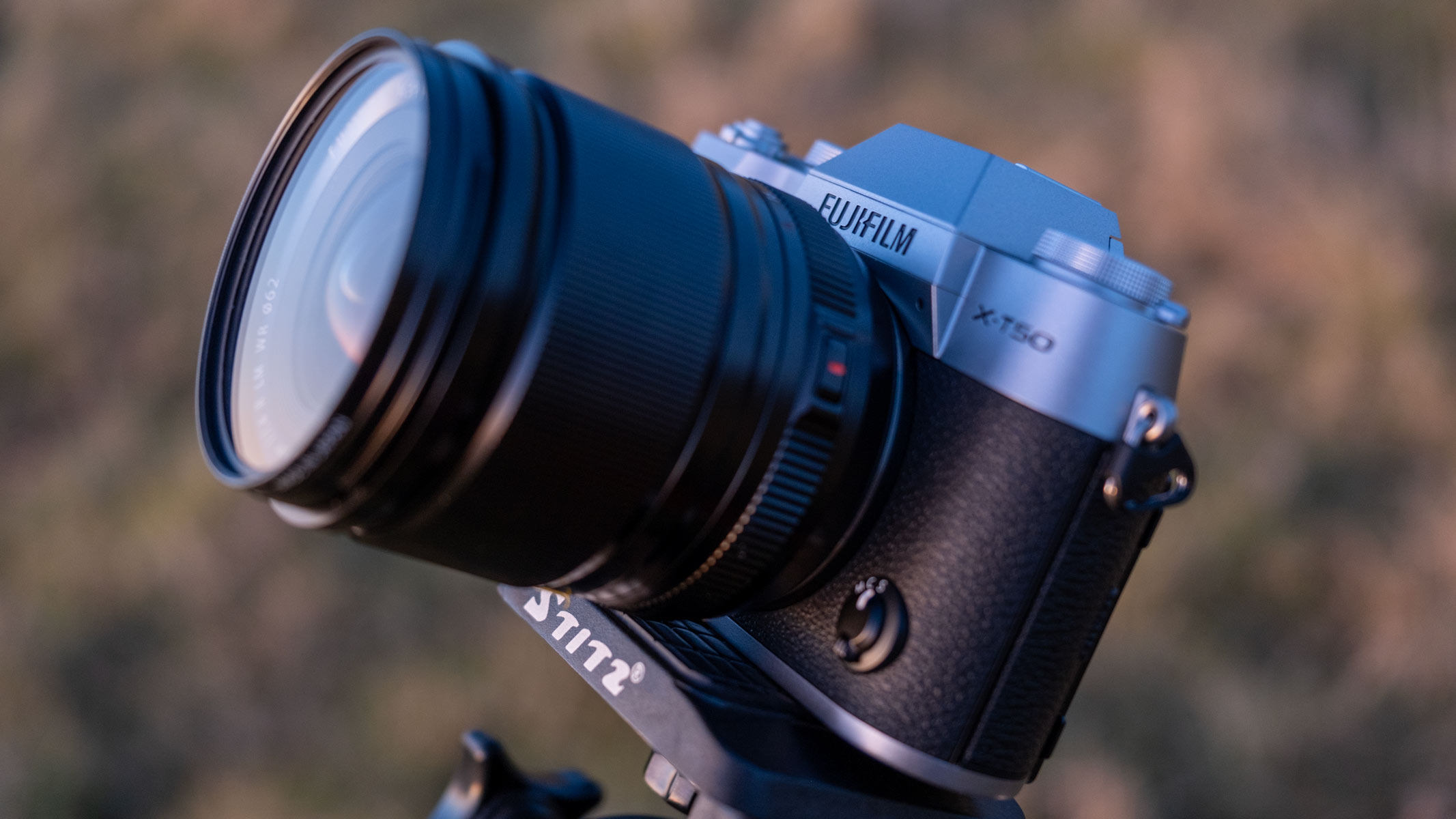
Extended processing time is expected with long-exposure noise reduction, but we found that shooting in raw still mode took some time to process. We hoped the X-Trans sensor would be quicker. There is an image processing algorithm that promises to boost the resolution without reducing the signal-to-noise ratio, which works well at resolving details in the night sky.
Aside from performing well during astrophotography, the X-T50 is adept at capturing a wide range of photographic subjects. We used the camera to take photos of people, animals, architecture, landscapes and light streaks.
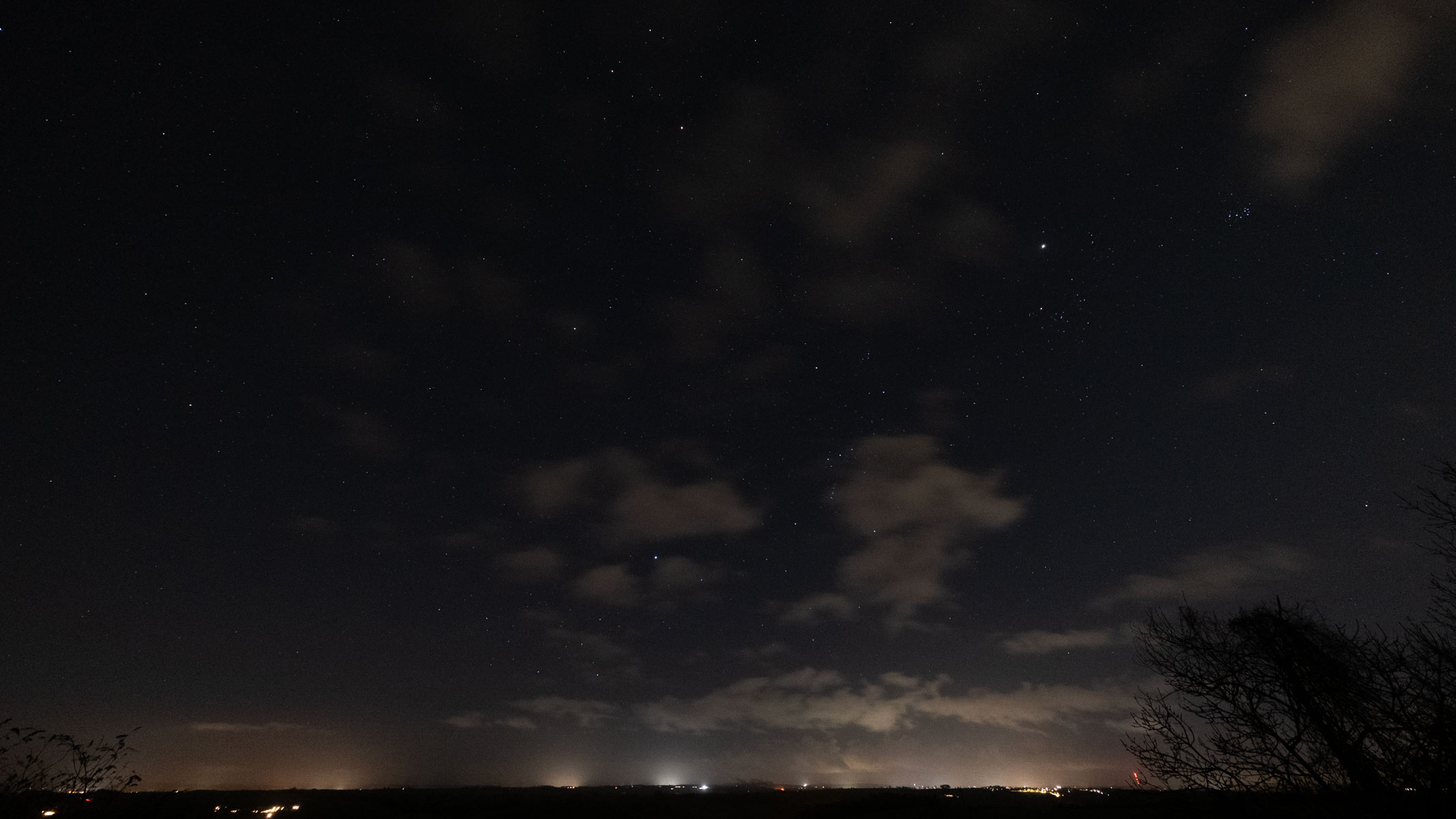
Fujifilm X-T50: Design

★★★★★
- Classic, film-style housing
- Screen that articulates only one way
- Tactile creative controls
The Fujifilm X-T50 is a stylish APS-C camera that weighs just under a pound — 15.45 ounces (438 grams) — with the battery and memory card, making it a super-lightweight option for astrophotographers who need to travel far to get their perfect shot.
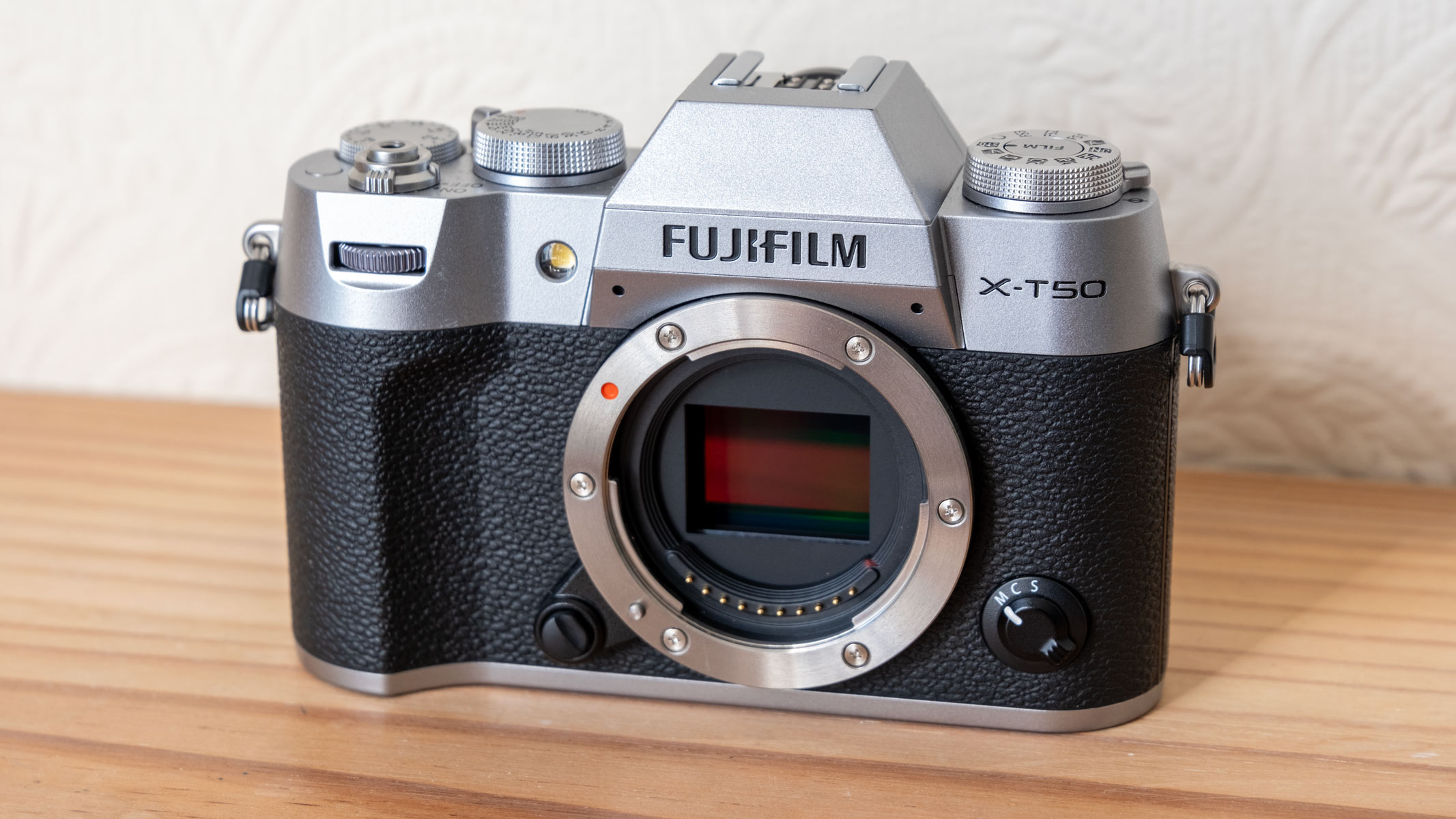
The Fujifilm X-T50 measures 4.9 x 3.3 x 1.9 inches (124 x 84 x 49 millimeters), so it’s a more compact version of the X-T5 with the same photo power. The only downside to the size of this camera is that it can feel unbalanced with larger lenses such as the XF 8-16mm aspherical lens. We liked using it with smaller lenses, but this was just our preference.
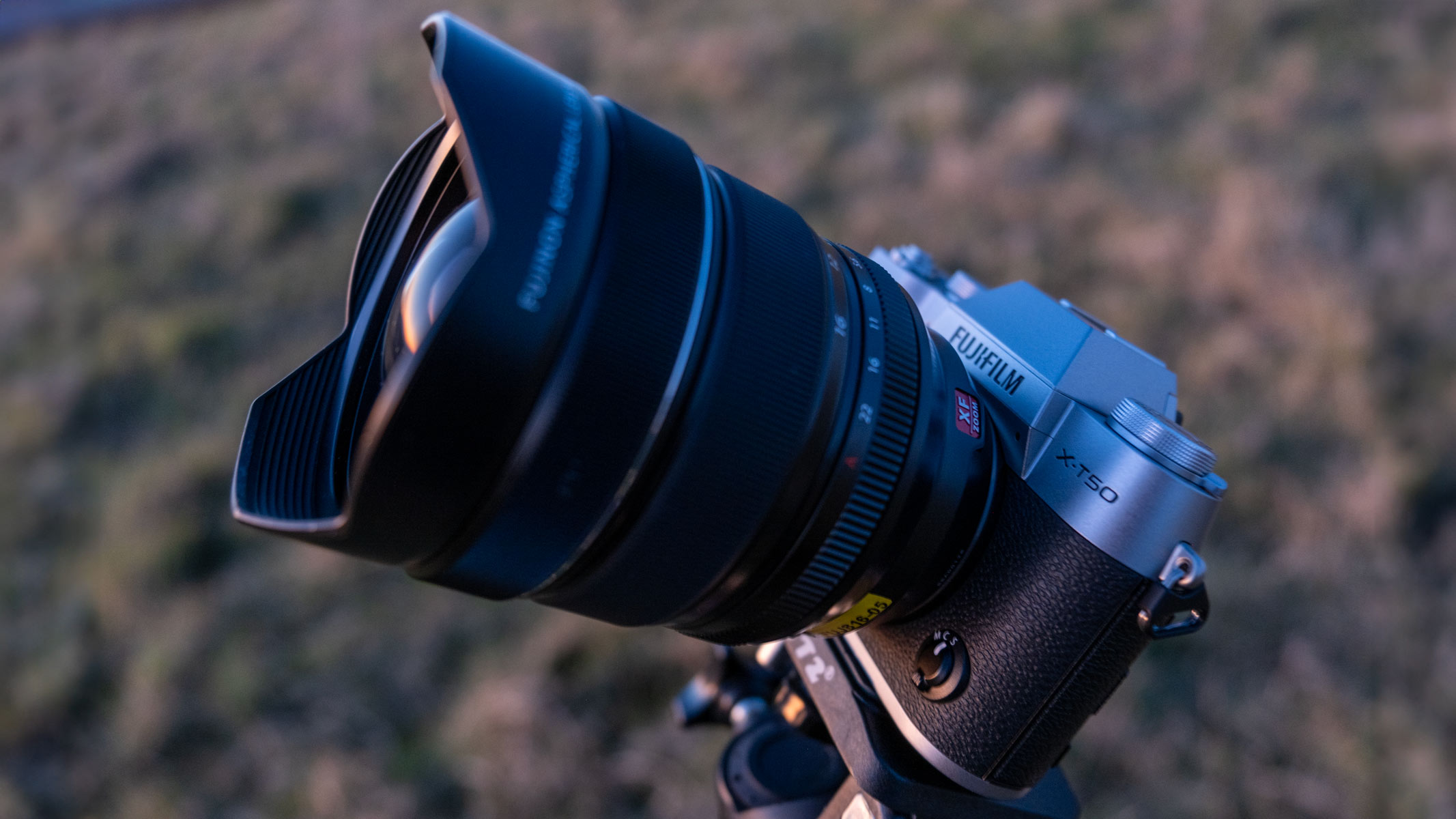
Fujifilm is known for championing creative expression with the X-series line of cameras, and the X-T50 is no exception. The 40-MP X-Trans CMOS 5 HR sensor and 2.36m dot viewfinder are hidden within the sleek housing that resembles a classic film camera. The new film-simulation dial features a range of classic film simulations, including Provia (standard), Velvia (vivid) and monochrome.
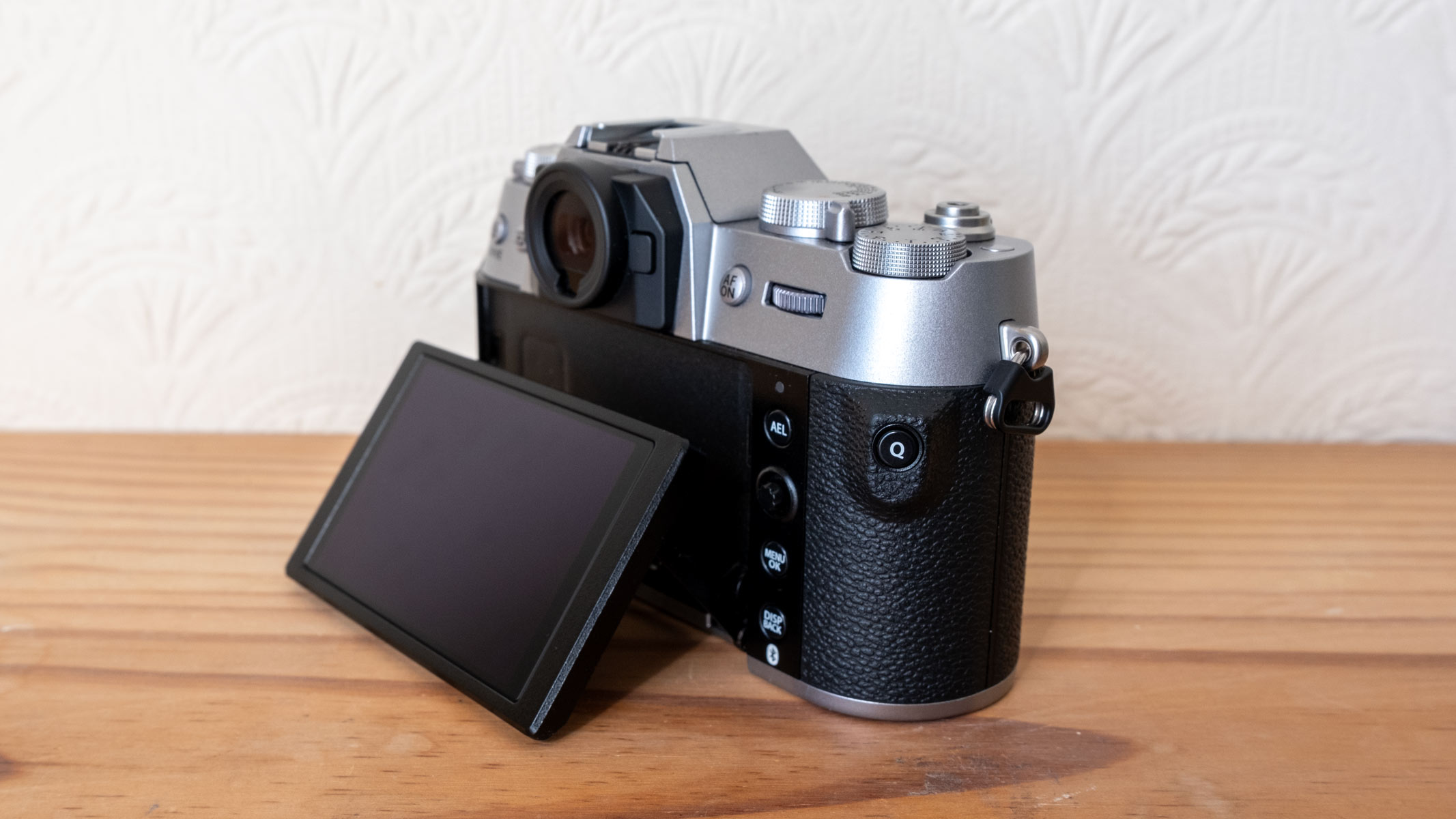
The screen is a tilting LCD, and although the screen tilts only on a horizontal axis, we found no major problems while using it during our shoots. A screen that tilts on multiple axes would definitely improve the utility of this camera, and if you need this feature from a camera, the X-T5 might suit you better.
Fujifilm X-T50: Functionality
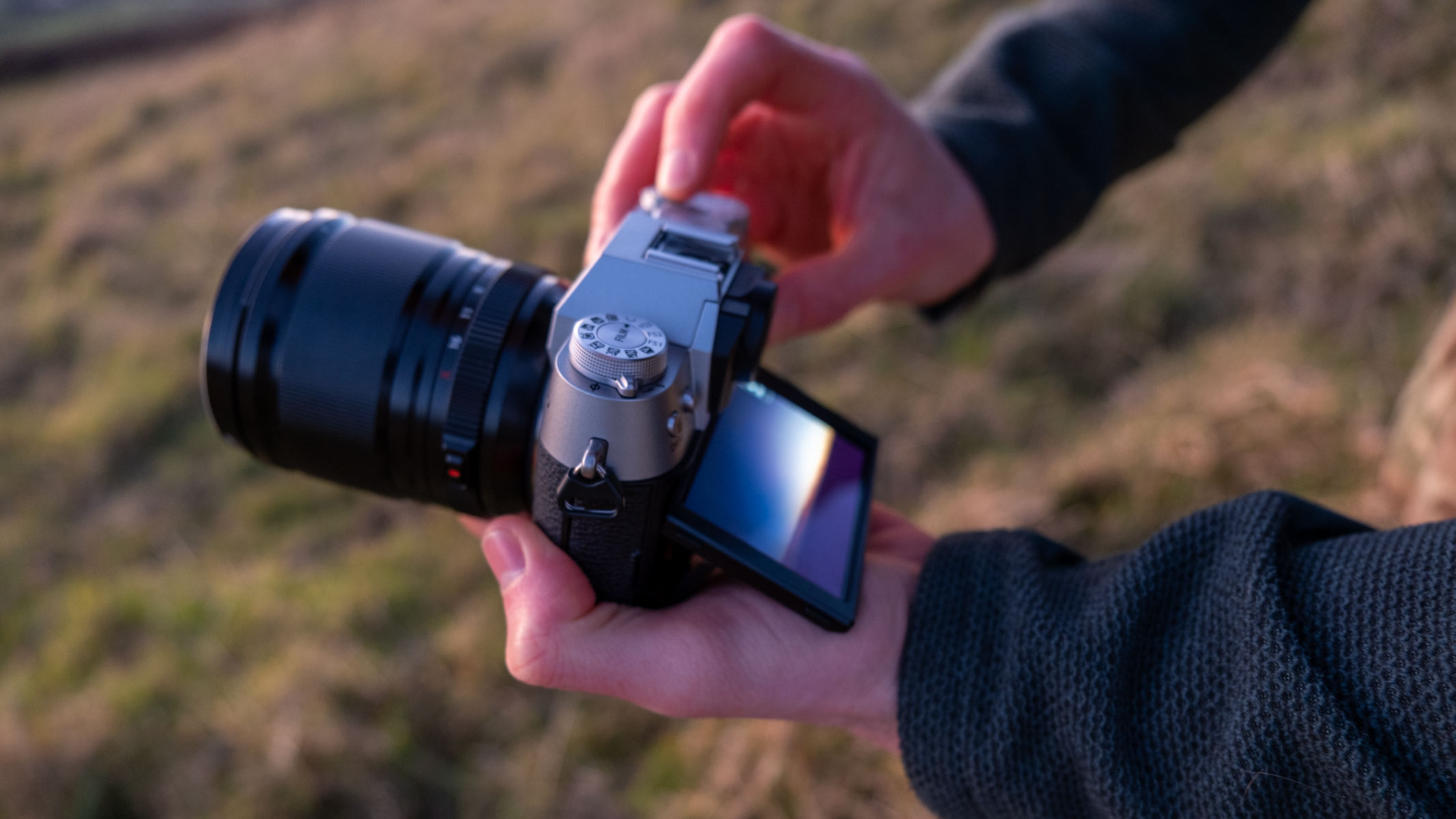
★★★★
- Good battery life
- Wi-Fi and Bluetooth connectivity
- Only one SD card slot
We didn’t have to change the battery during our astrophotography testing, which was on two separate occasions of about two hours each. The CIPA-rated battery life for this model is 305 shots in normal mode. That’s down significantly from the X-T5’s rating of 580 shots, but we found that it was not a major issue during our shoots.
As for changing the battery, the compartment has a small latch that easily slides and pops open, making the battery reloading quick and satisfying. The single SD slot sits next to the battery compartment and supports SDXC memory cards up to UHS-II. If you consistently go through more than one large-capacity SD card on every shoot, then you may want to find a model that has dual-card capability.
The three dials on the top of the camera control the exposure, film-simulation style and shutter speed. Some astrophotographers might be put off by the shutter-speed dial, especially since it lacks glow-in-the-dark features. But for exposures longer than one second, you just set the dial to “T” and select the time on the screen anyway.
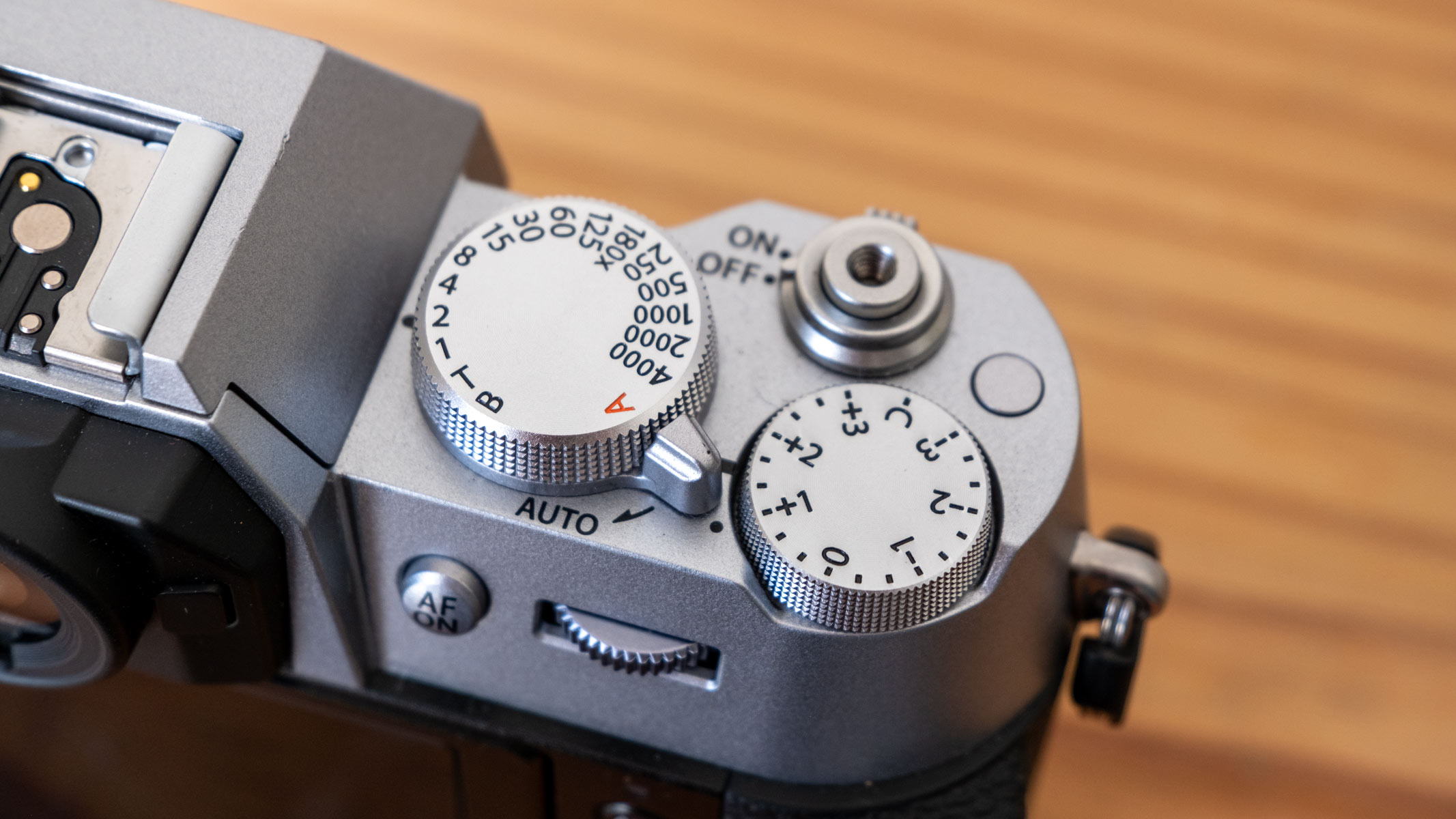
On the side of the X-T50, there are three ports: a mic/remote jack, a USB-C port and a mini-HDMI port. The USB-C port doubles as a charging port, which makes recharging simple and easy without the need for a separate battery charger. Connectivity doesn’t stop there, though, as the X-T50 is compatible with Fujifilm’s native camera-to-cloud program Frame.io and XApp, which connects to smartphones via Bluetooth for image transfer and remote camera operation.
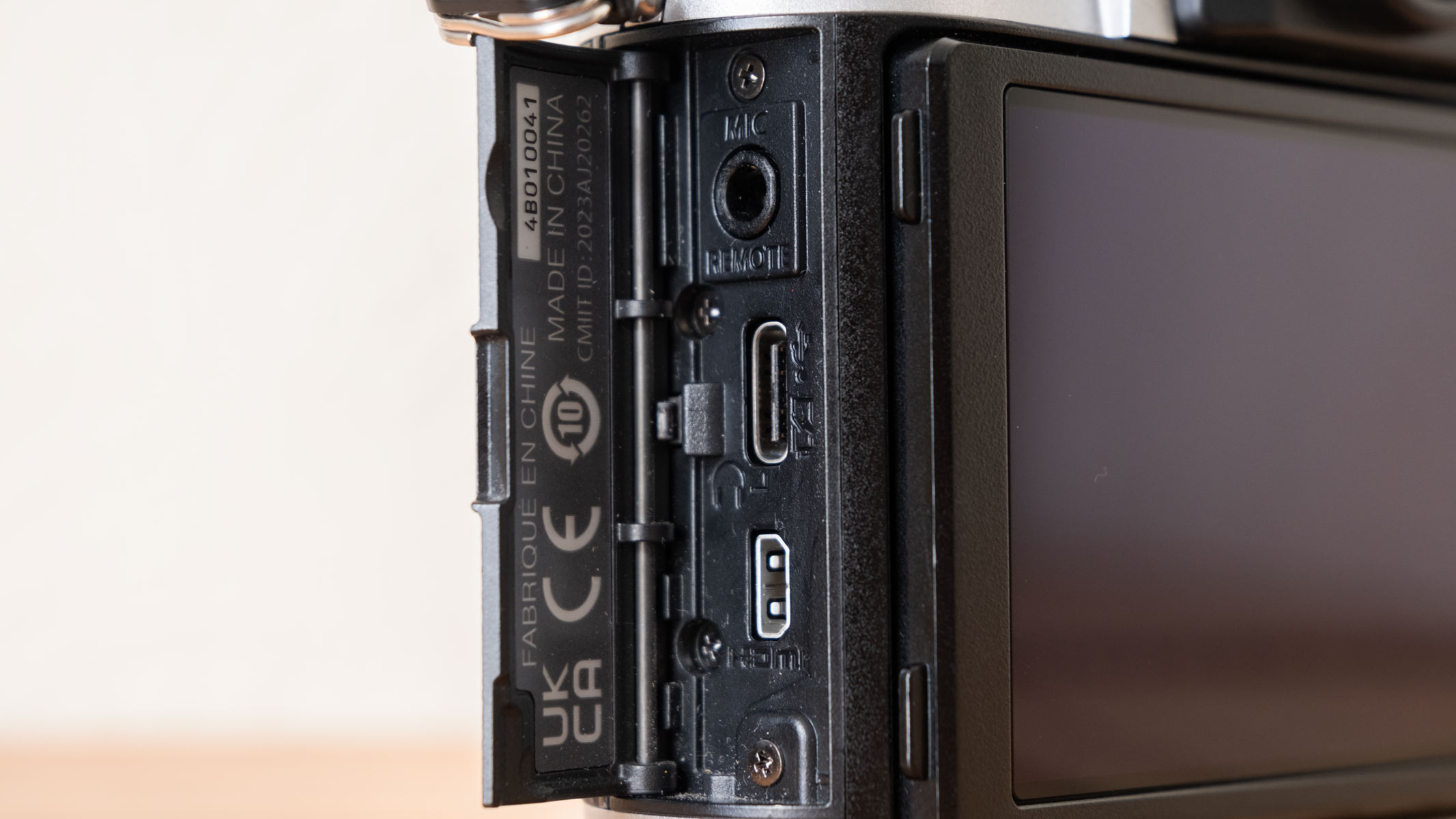
On the top of the viewfinder, there is a flash hidden neatly into the design, as well as a hot-shoe adapter for attaching external devices. Next to the shutter-speed dial, there is an auto switch, which selects exposure settings automatically, while a similar switch on the film-simulation dial pops the flash up. While useful in some situations, the built-in flash is relatively weak compared with those of other cameras.

Fujifilm X-T50: User reviews
Fujifilm X-T50 users like the camera’s high-resolution performance, which makes photographs from beginners seem professional. The X-T50 has been praised for being compact and lightweight, making it a great choice for a travel camera.
One review praised the storage and battery life but said there is a steep learning curve for new users. Many users love the film-simulation dial and the wide range of quality X-series lenses that are available to use with this model.
How we tested the Fujifilm X-T50
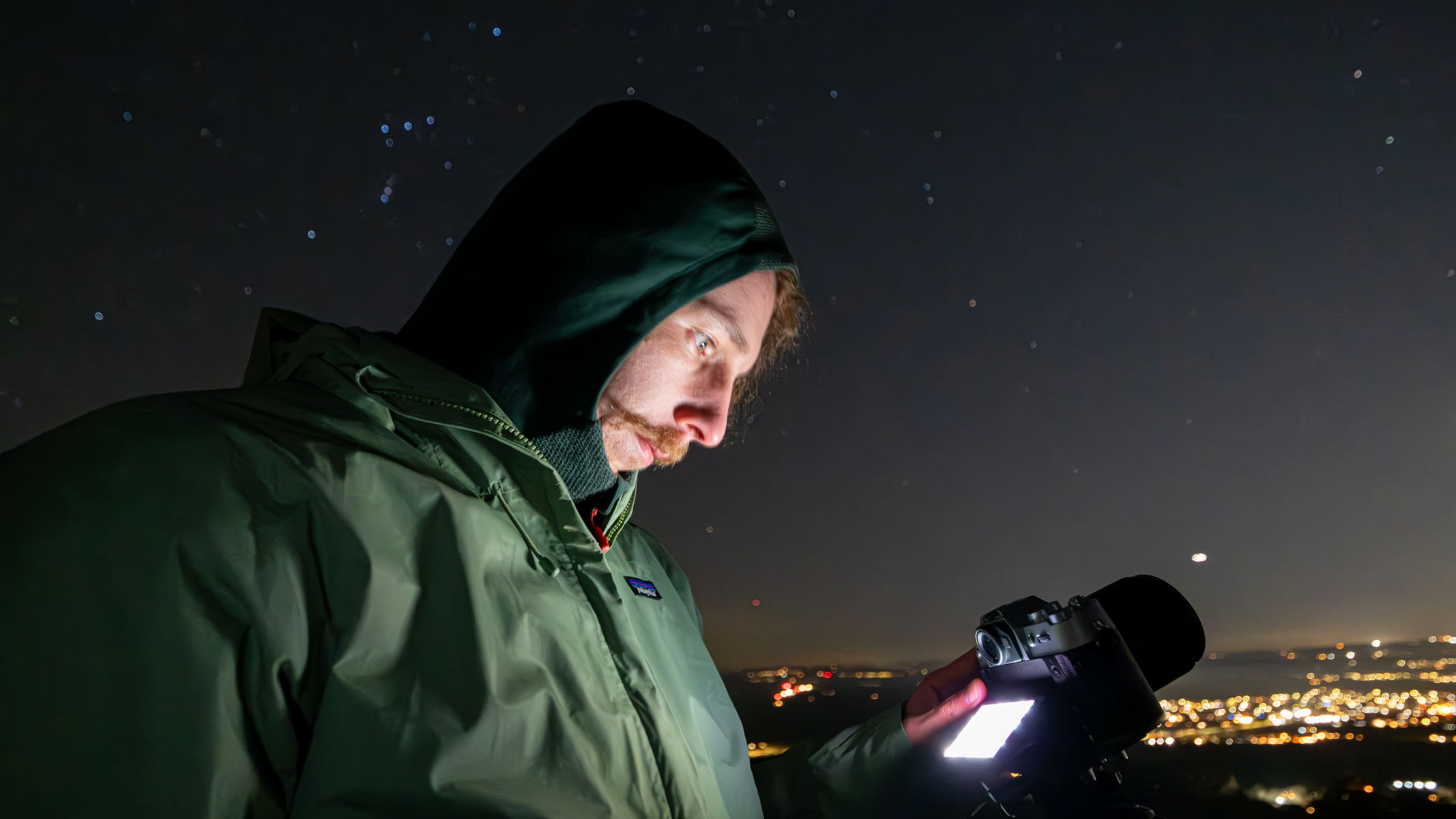
We tested the Fujifilm X-T50 for three weeks in both daylight and at night. Our astrophotography shoots were in areas with a Bortle rating of 3 or 4, in late February, in some fields near Bath, U.K. The skies were clear, and low temperatures reached 36 degrees Fahrenheit (2 degrees Celsius).
We took photographs of planets, a nebula, a galaxy and a series of constellations, concentrating on the camera’s autofocus ability for low-light astrophotography and the level of high ISO. We managed to get photographs of the Orion Nebula, Andromeda galaxy, Jupiter, Mars, and a range of constellations and bright stars.
We used the XF 18mm f/1.4 lens, the XF 8-16mm f/2.8 lens and the XF 16-55mm f/2.8 lens during our testing, as well as a basic tripod to keep the camera steady during long exposures.
Should I buy the Fujifilm X-T50?
Buy it if:
✅ You are creative. The Fujifilm X-T50 is a compact camera that focuses on creativity, with features like a film-simulation dial and manual controls.
✅ You want a versatile camera. This camera is suitable for a wide range of photography types, including astrophotography.
Don’t buy it if:
❌ You need a full-frame camera. The Fujifilm X-T50 is an APS-C crop camera, so if you need a full-frame camera, this is not for you.
❌ You need astro-specific features. Although this camera performs relatively well with astrophotography, it lacks specific astrophotography features, like modes that preserve night vision and astrophotography modes.
The Fujifilm X-T50 is a great camera for amateur photographers who enjoy shooting a variety of subjects in lots of different styles. It can capture great stills of people, animals, landscapes and the stars. It balances technicality and style with a huge resolution sensor housed within a film-style camera body. The film-simulation dial offers easy changes to the mood and style of your photography.
At $1,399 / £1049, the Fujifilm X-T50 is a great value for intermediate photographers who want to try their hand at astrophotography. The lack of a full-frame sensor may put off some users, but this camera is still very capable of capturing a wide range of celestial sights. As with any retail camera, pairing the Fujifilm X-T50 with a decent star tracker will take your astrophotography to the next level.
If the Fujifilm X-T50 isn’t for you
For those who want a professional-level camera that can handle all the work you throw at it, the Fujifilm X-H2 would fit the bill. It has the same high-res 40-MP sensor, as well as a fully articulating screen, dual memory card slots and more customizable buttons. The X-H2 is seriously geared toward video production, with the ability to record in 8K and ProRes.
If you need a camera with a full-frame sensor and more astro features, we recommend the Nikon Z8. It has a bigger, 45-MP sensor and a night vision mode, and it offers a superior dynamic range. We picked it as our best mirrorless camera for astrophotography in our best cameras for astrophotography guide.
Beginners might be more suited to a camera like the Fujifilm X-M5 — a compact camera with a 26-MP sensor, a fully articulating screen and a film-simulation dial with X-series lens capability. It performed relatively well for basic astrophotography when paired with the XF 18mm f/1.4 lens.


